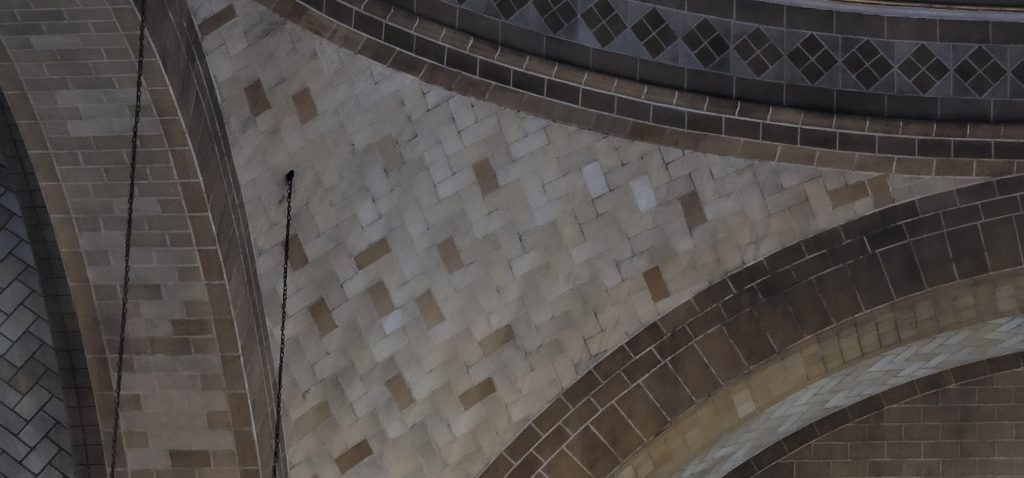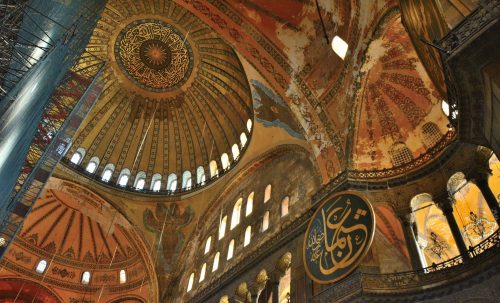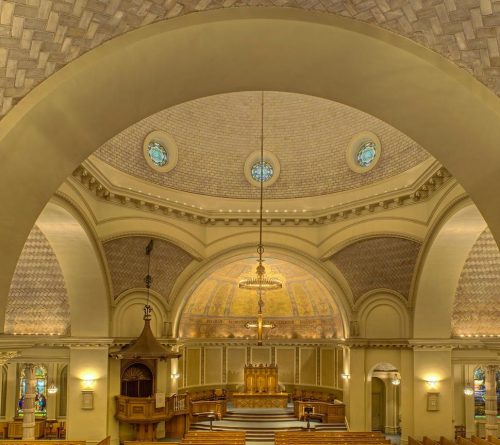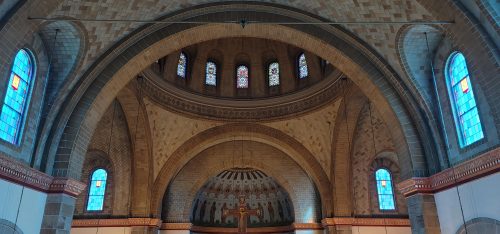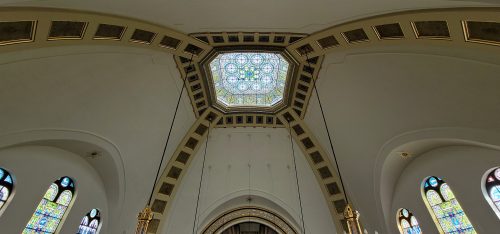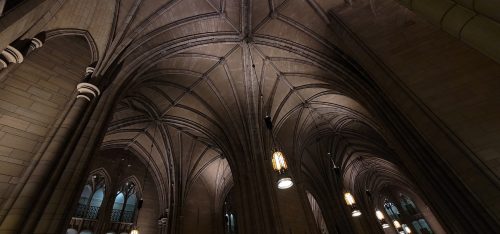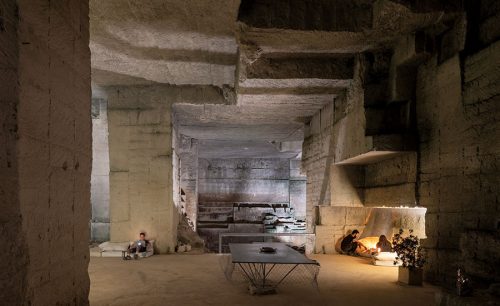2021.03.30 – Lecture 3
Rafael Guastavino and his son’s architectural innovations with vaults and domes, using traditional Catalan cohesive construction methods with thin terracotta tiles.
Pantheon (Rome, 126 AD) noted by Guastavino Sr. as a great dome of antiquity, in his lecture on the cohesive construction method of structural tile vaulting, delivered to the Congress of the American Institute of Architects on August 5, 1893.
Hagia Sophia (Istanbul, 360-537 AD) noted by Guastavino Sr. as a great dome of antiquity, in his lecture on the cohesive construction method of structural tile vaulting, delivered to the Congress of the American Institute of Architects on August 5, 1893.
Central Congregational Church (Providence, 1893, John Carrere and Thomas Hastings architects) noted by Guastavino Sr. as an example of his current work, in his lecture on the cohesive construction method of structural tile vaulting, delivered to the Congress of the American Institute of Architects on August 5, 1893.
St. Boniface Roman Catholic Church (Pittsburgh, 1926, A.F. Link architect) local example of Guastavino Jr.’s central dome supported by buttressing half dome and barrel vaulting, illustrating the cohesive construction method of structural tile vaulting.
Rodef Shalom Synagogue (Pittsburgh, 1907, Henry Hornbostel architect) local example of Guastavino Jr.’s four sided square plan dome, illustrating the cohesive construction method of structural tile vaulting.
Cathedral of Learning (Pittsburgh, 1936, Charles Z. Klauder architect) local example of Guastavino Jr.’s vaulted arcade supported by grid of columns, illustrating the cohesive construction method of structural tile vaulting.
Baker Hall (Pittsburgh, 1913, Henry Hornbostel architect) local example of Guastavino Jr.’s shallow dome vault with elliptical oculus, illustrating the cohesive construction method of structural tile vaulting.
Ca’n Terra ‘House of the Earth’ (Menorca, 2021, Antón García-Abril & Débora Mesa architects) contemporary example cohesive construction, illustrated by a grotto quarry of Marés sandstone, made of dust sized sediment gathered and carried by drops of water seeping through fissures, crystalizing into a cohesive monolithic whole.
Lecture Audio (podcast):
Download Lecture Notes

